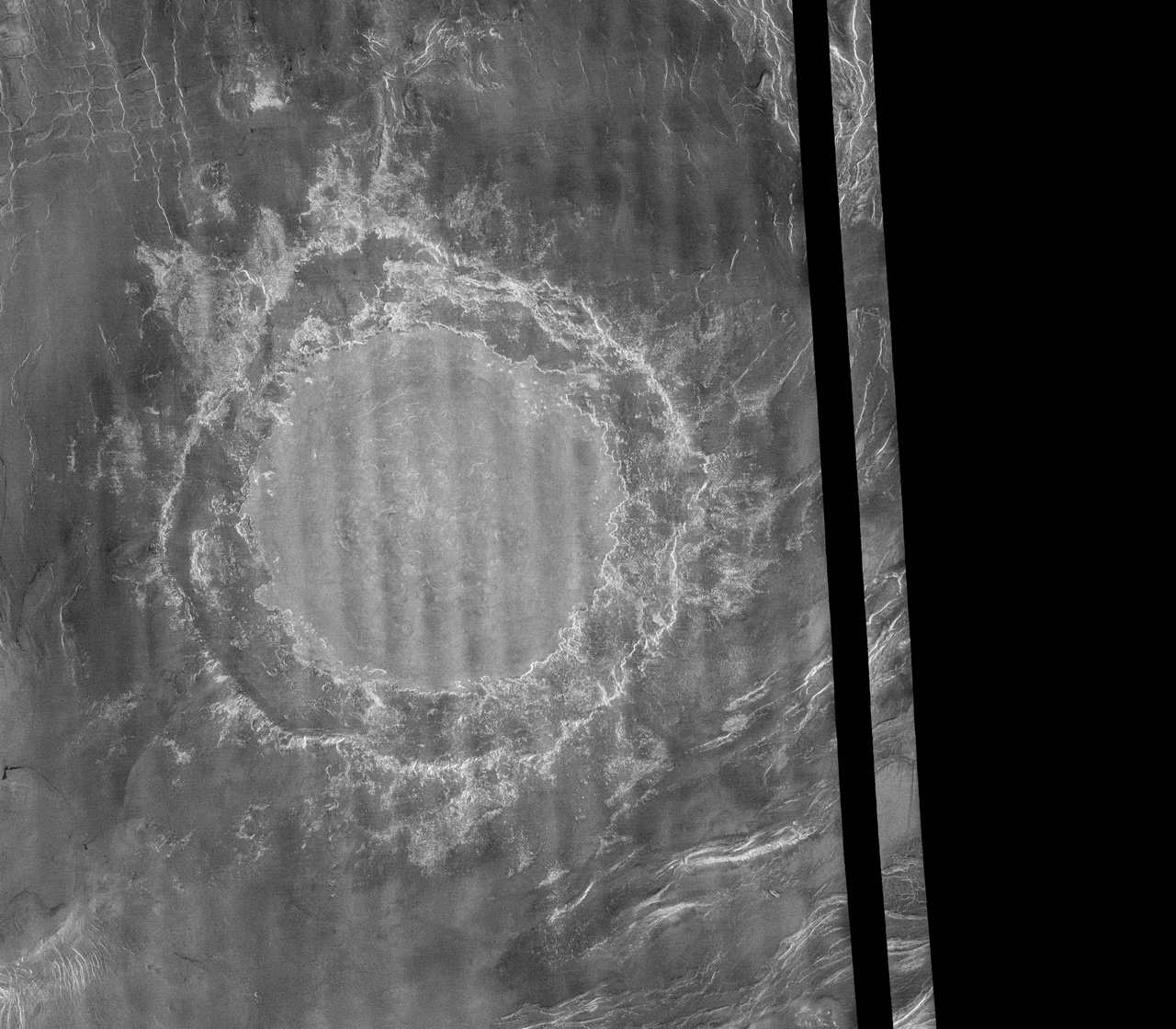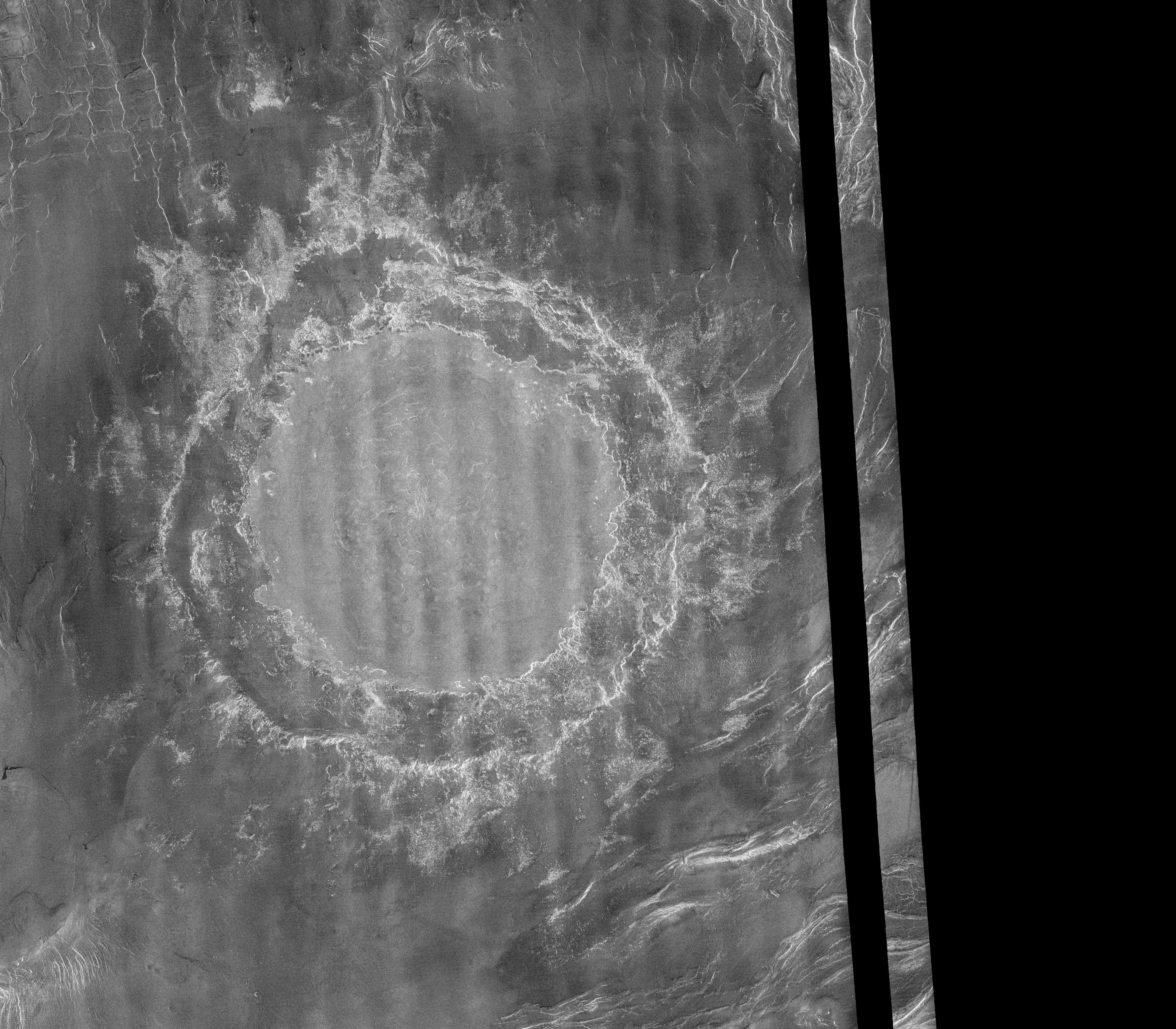Margaret Mead Crater on Venus

| Credit | NASA/JPL-Caltech |
|---|---|
| Historical Date | November 12, 1990 |
| PIA Number | PIA00148 |
| Language |
|
This Magellan image mosaic shows one of the largest impact craters known to exist on Venus. The crater is 170 miles (2745 kilometers) in diameter.
The crater is located north of Aphrodite Terra and east of Eistla Regio at latitude 12.5 degrees north and longitude 57.4 degrees east, and was imaged during Magellan orbit 804 on November 12, 1990.
The Magellan science team named this crater Mead, after Margaret Mead, the American Anthropologist (1901- 1978).
Mead is classified as a multi-ring crater with its innermost, concentric scarp being interpreted as the rim of the original crater cavity. No inner peak-ring of mountain massifs is observed on Mead. The presence of hummocky, radar-bright crater ejecta crossing the radar-dark floor terrace and adjacent outer rim scarp suggests that the floor terrace is probably a giant rotated block that is concentric to, but lies outside of, the original crater cavity.
The flat, somewhat brighter inner floor of Mead is interpreted to result from considerable infilling of the original crater cavity by impact melt and/or by volcanic lavas. To the southeast of the crater rim, emplacement of hummocky ejecta appears to have been impeded by the topography of preexisting ridges, thus suggesting a very low ground-hugging mode of deposition for this material.
Radar illumination on this and all other Magellan image products is from the left to the right in the scene.

